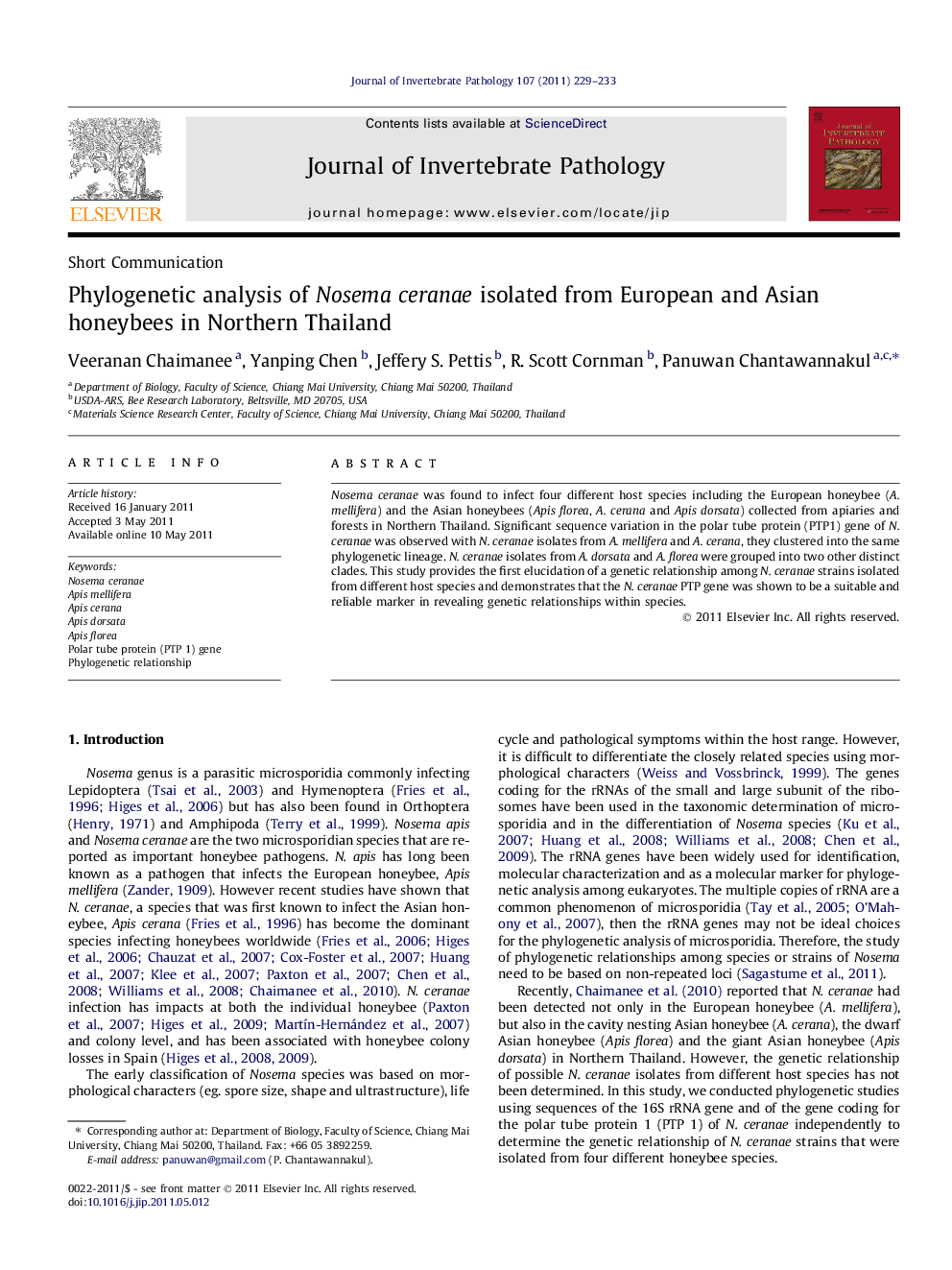| Article ID | Journal | Published Year | Pages | File Type |
|---|---|---|---|---|
| 4558037 | Journal of Invertebrate Pathology | 2011 | 5 Pages |
Nosema ceranae was found to infect four different host species including the European honeybee (A. mellifera) and the Asian honeybees (Apis florea, A. cerana and Apis dorsata) collected from apiaries and forests in Northern Thailand. Significant sequence variation in the polar tube protein (PTP1) gene of N. ceranae was observed with N. ceranae isolates from A. mellifera and A. cerana, they clustered into the same phylogenetic lineage. N. ceranae isolates from A. dorsata and A. florea were grouped into two other distinct clades. This study provides the first elucidation of a genetic relationship among N. ceranae strains isolated from different host species and demonstrates that the N. ceranae PTP gene was shown to be a suitable and reliable marker in revealing genetic relationships within species.
Graphical abstract■■■Figure optionsDownload full-size imageDownload as PowerPoint slideHighlights► Nosema ceranae strains were isolated from four Apis species in Northern Thailand. ► Polar tube protein gene is a useful genetic marker for studying N. ceranae strains. ► N. ceranae from four honey bee species reflects the host-parasite coevolution. ► N. ceranae (Apis mellifera and Apis cerana) were grouped in the same phylogenetic clade.
